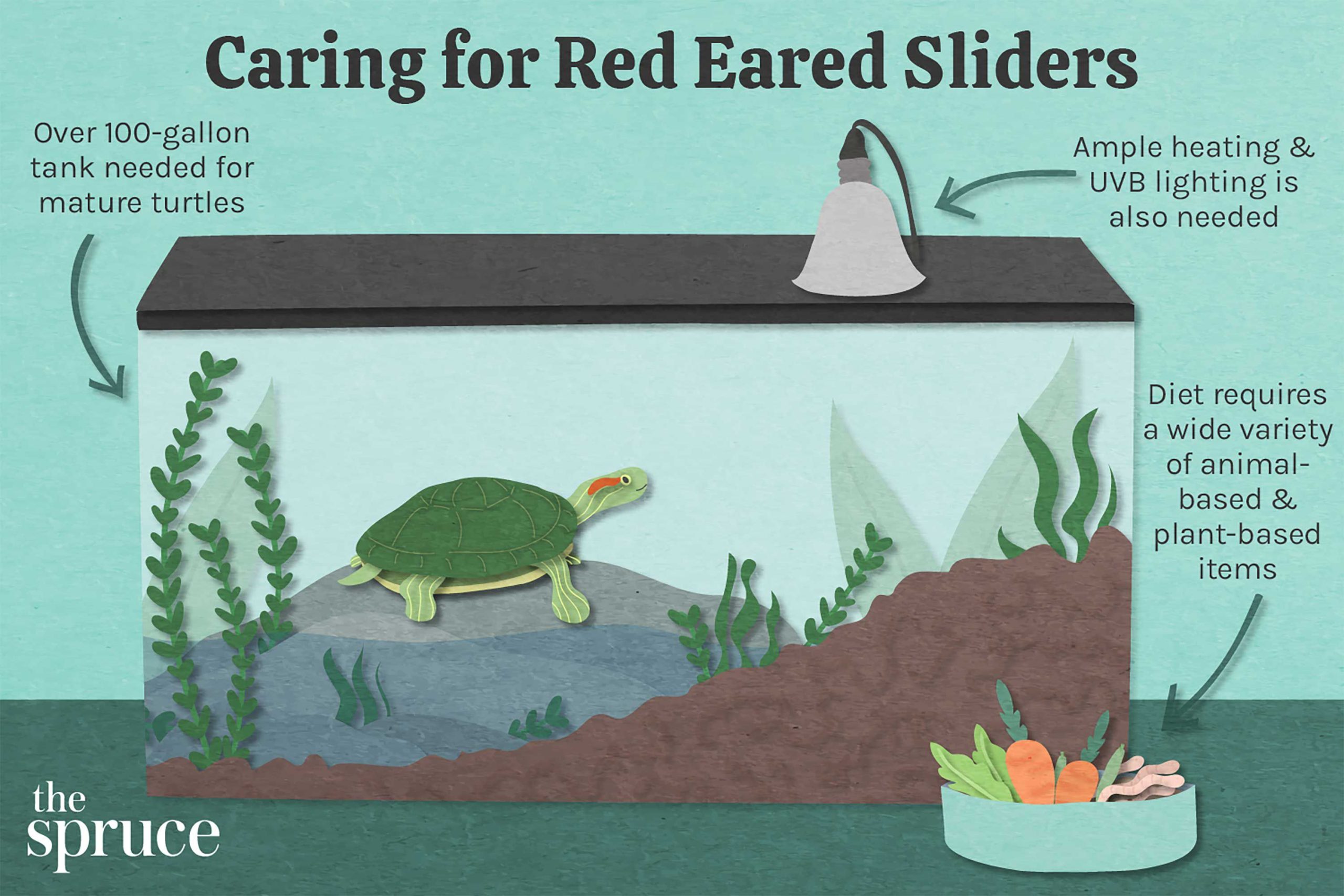The ideal tank setup and habitat requirements for red-eared slider turtles include a spacious tank with a minimum size of 75 gallons, a basking area with a uvb light and heat lamp, clean water with filtration and regular water changes, and a suitable substrate and hiding spots for them to feel secure. Proper temperature and humidity levels should also be maintained to ensure their well-being.
Providing a balanced diet and regular exercise outside the tank are also important for their overall health and happiness.

Credit: reptifiles.com
Choosing The Right Tank For Your Red-Eared Slider Turtles
Choosing the right tank size and type is essential for your red-eared slider turtles. Consider factors like their size, activity level, and comfort. A larger tank allows them to swim and explore freely. Ensure the tank has a basking area with a heat lamp for them to sunbathe.
It’s important to maintain the water temperature between 75-85°f and use a filter to keep the water clean. Create a natural habitat by adding rocks, plants, and hiding spots. Providing uvb lighting is crucial for their health and shell development.
Regularly monitor water quality and perform routine maintenance to keep the tank environment optimal for your turtles. With the ideal tank setup and habitat, your red-eared slider turtles can thrive and live a happy, healthy life.
Creating The Perfect Aquatic Environment For Red-Eared Slider Turtles
Creating the perfect aquatic environment for red-eared slider turtles involves maintaining the ideal water temperature and quality. The water temperature should be kept between 75-85°f. A submersible aquarium heater can be used to regulate the temperature. Additionally, it is important to ensure clean and filtered water for the turtles.
A good filtration system will remove debris and waste, keeping the water clean and preventing the buildup of harmful bacteria. Failing to maintain proper water quality can lead to health issues for the turtles. Another crucial aspect is providing adequate aeration in the tank.
An air pump and air stone can be used to oxygenate the water, ensuring the turtles have a constant supply of fresh air. By following these guidelines, turtle owners can create a comfortable and healthy habitat for their red-eared slider turtles.
Understanding Red-Eared Slider Turtle’S Basking Needs
Understanding the basking needs of red-eared slider turtles is crucial for their overall health. A proper basking area is essential. Providing a platform for them to rest and soak up the sun is vital. Uvb lighting plays a significant role in their well-being.
It helps turtles metabolize calcium and maintain healthy bones and shells. Make sure the basking area is easily accessible and large enough. This allows the turtles to fully extend their limbs while basking. A balance between heat and uvb light is necessary.
Regularly monitor the temperature and adjust it accordingly. Keep in mind that excessive heat can be harmful to the turtles. By meeting their basking needs and providing the right environment, you can ensure the well-being of your red-eared slider turtles.
Furnishing The Tank: Decorations And Substrate For Red-Eared Slider Turtles
When setting up a tank for your red-eared slider turtles, it’s important to consider their habitat requirements. Furnishing the tank with suitable decorations and substrate will provide them with a comfortable environment. For decorations, opt for items that simulate their natural habitat, such as rocks, driftwood, and plants.
These not only create an aesthetically pleasing tank but also provide hiding spots and climbing surfaces for the turtles. As for the substrate, choose a safe and appropriate option, like river rocks or sand, that allows for easy cleaning and prevents the risk of accidental swallowing.
A well-furnished tank with ample hiding spots and a suitable substrate will ensure that your red-eared slider turtles thrive in their new habitat.
Conclusion
To provide the ideal tank setup and habitat requirements for red-eared slider turtles, it is crucial to attend to their specific needs. By understanding the necessary components and creating an optimal environment, we can ensure the health and happiness of these fascinating creatures.
Firstly, maintaining water quality is essential, with a filtration system and regular water changes. Secondly, a spacious tank with both an aquatic area and a dry basking spot is vital for their balanced development. Additionally, providing a variety of hiding spots, vegetation, and suitable basking platforms enriches their environment and mimics their natural habitat.
Adequate lighting and heating are equally important to meet their specific temperature and uvb requirements. Lastly, a nutritious and well-balanced diet, including both commercial pellets and fresh vegetables, is crucial for their overall well-being. By following these guidelines, we can offer red-eared slider turtles a thriving and harmonious habitat, ensuring their longevity and enjoyment in captivity.





Leave a Reply